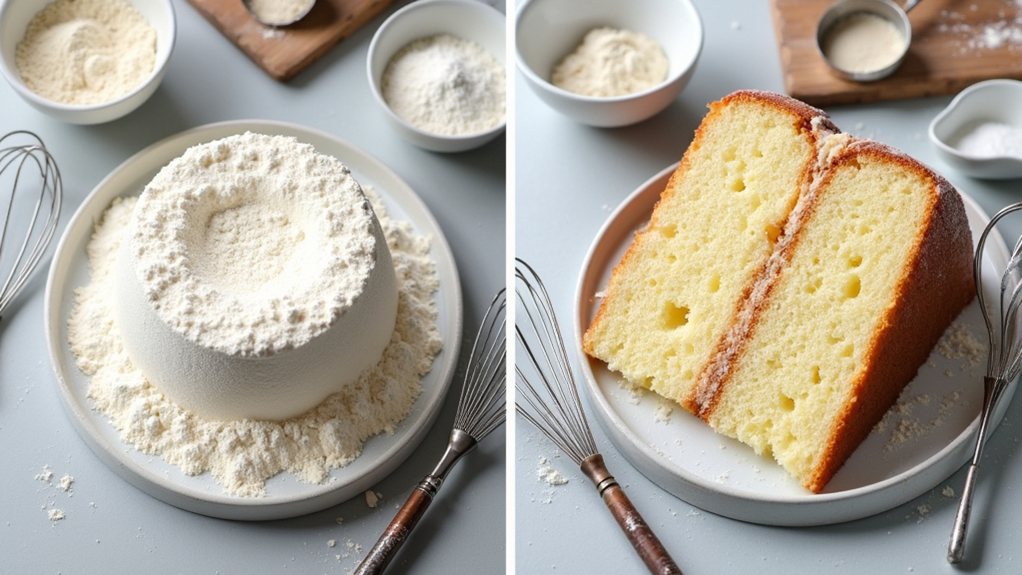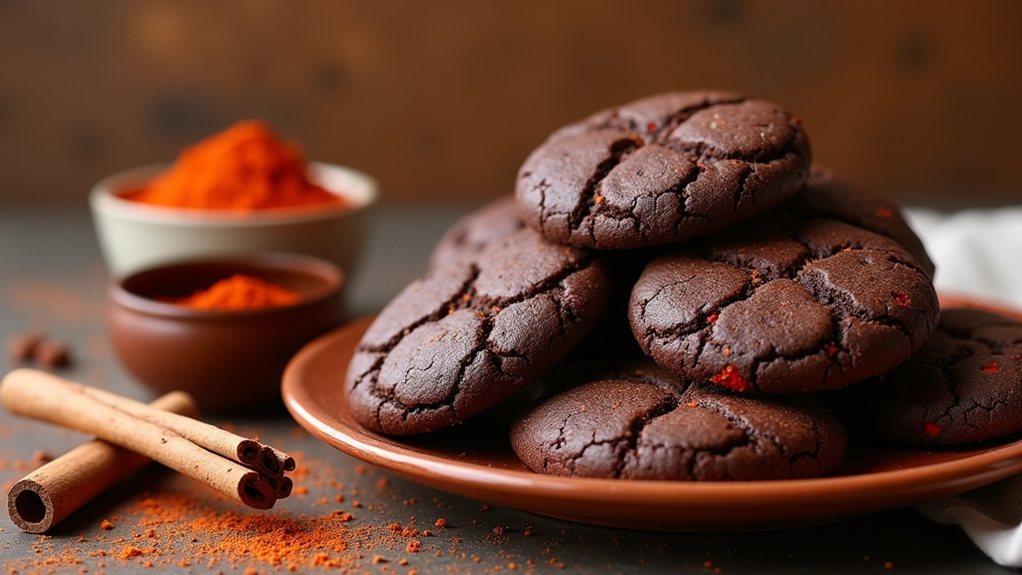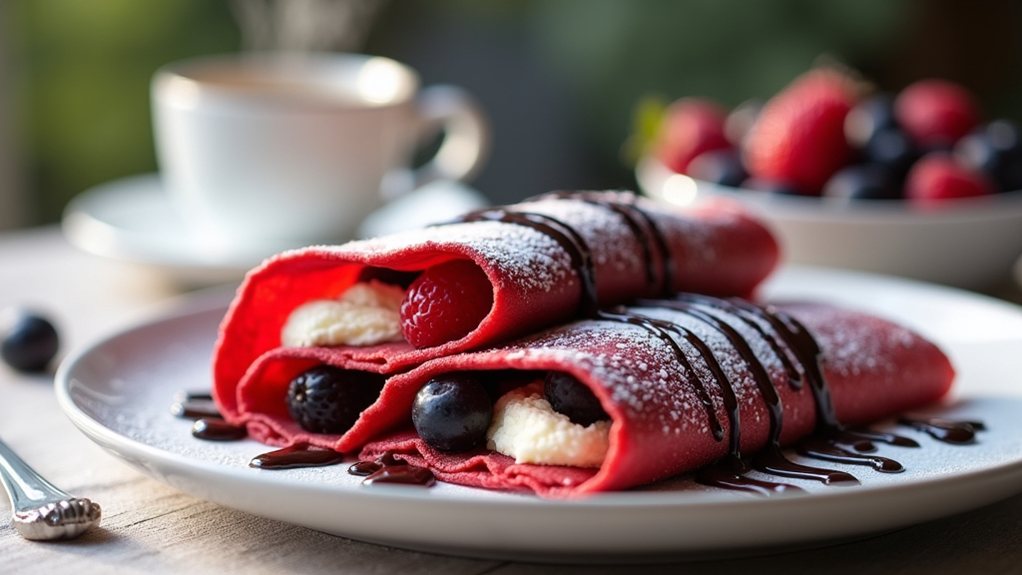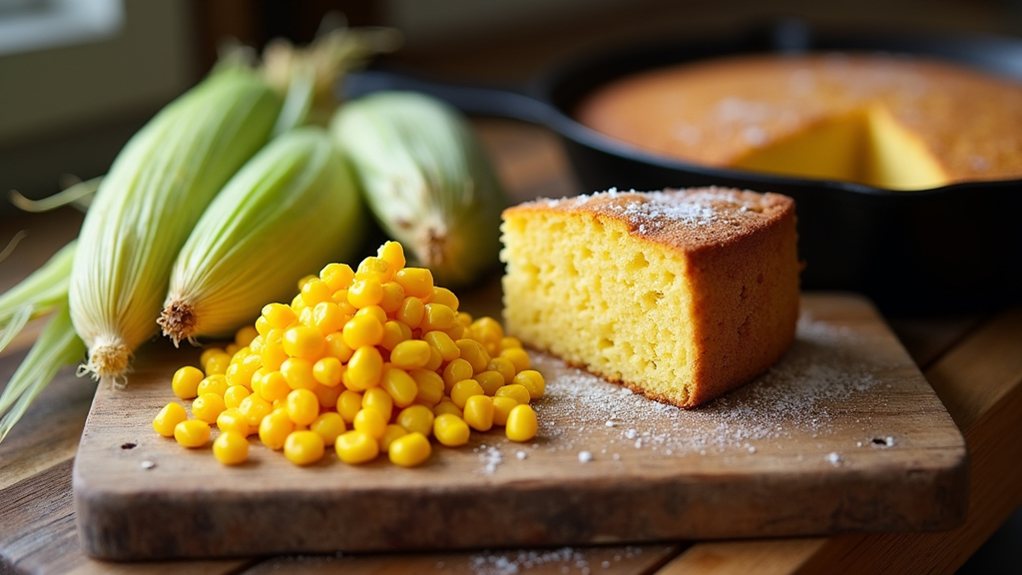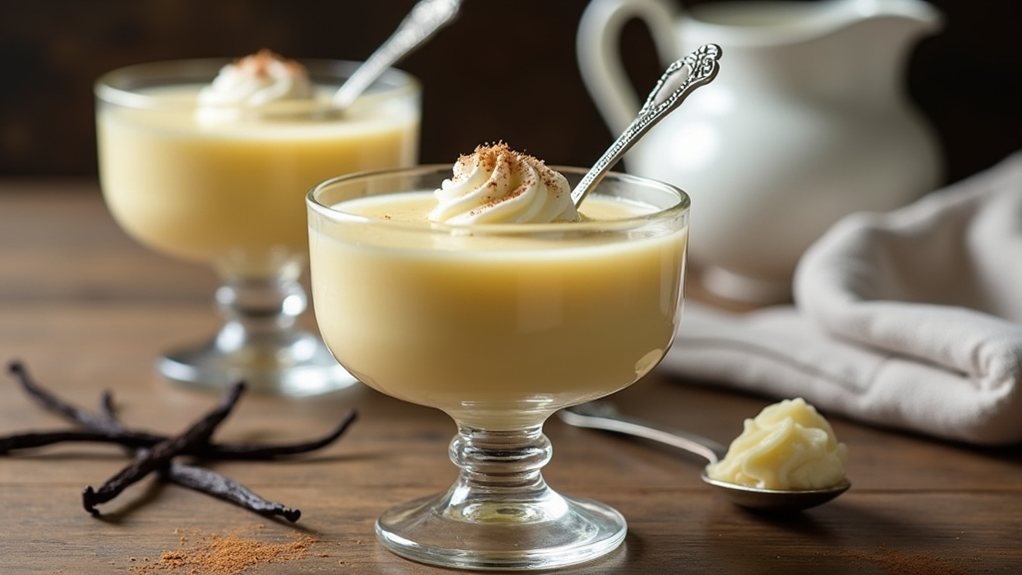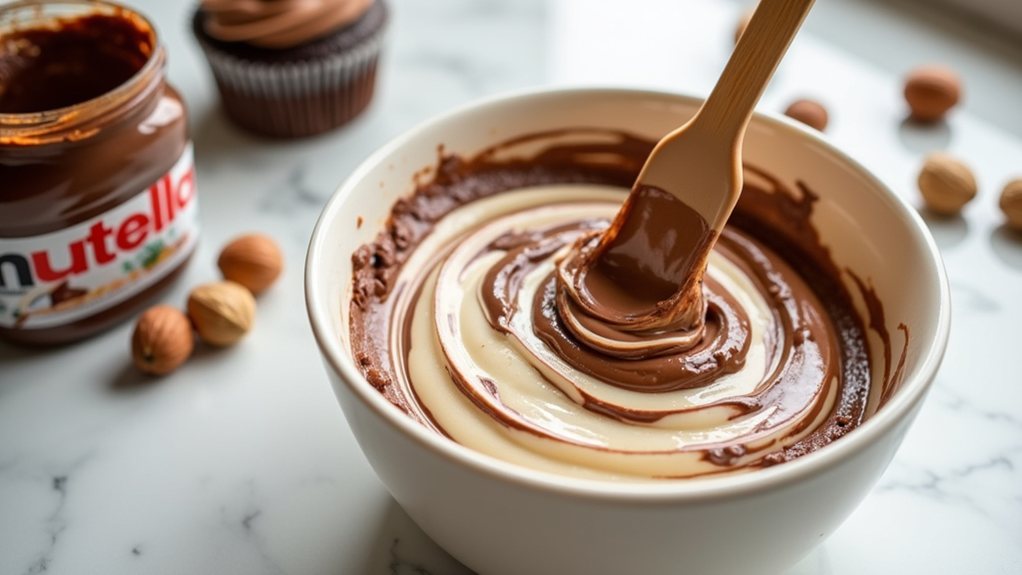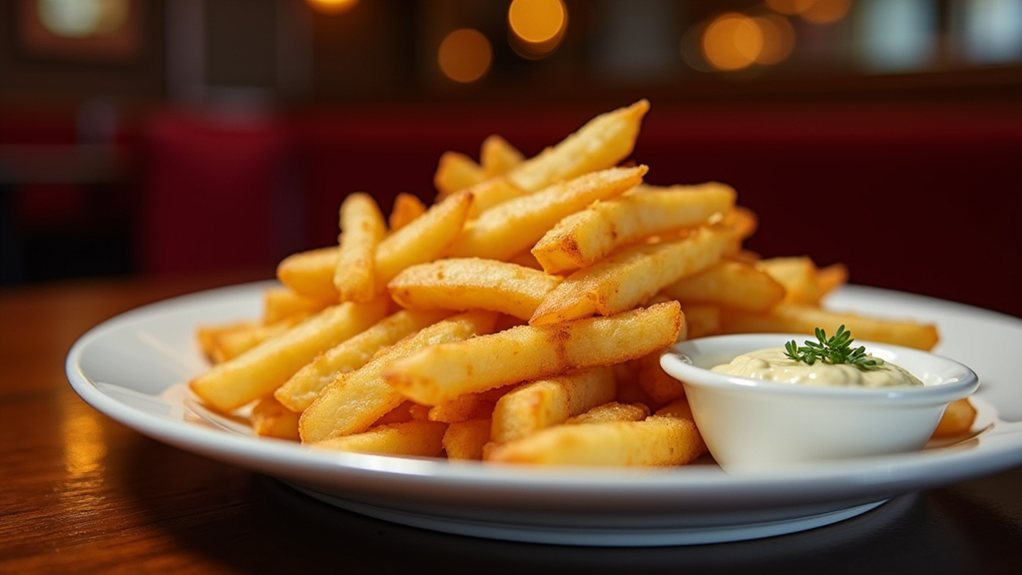Flour sits at the heart of every cake recipe, yet many bakers overlook the distinction between bleached and unbleached varieties. The processing differences, though subtle to the naked eye, can dramatically influence a cake's texture, rise, and mouthfeel. Bleached flour undergoes chemical treatments that alter its protein structure, while unbleached flour ages naturally over time. These seemingly minor variations create significant ripple effects throughout the baking process, affecting everything from moisture retention to structural integrity. What exactly happens when you choose one over the other?
Understanding Flour Processing Differences
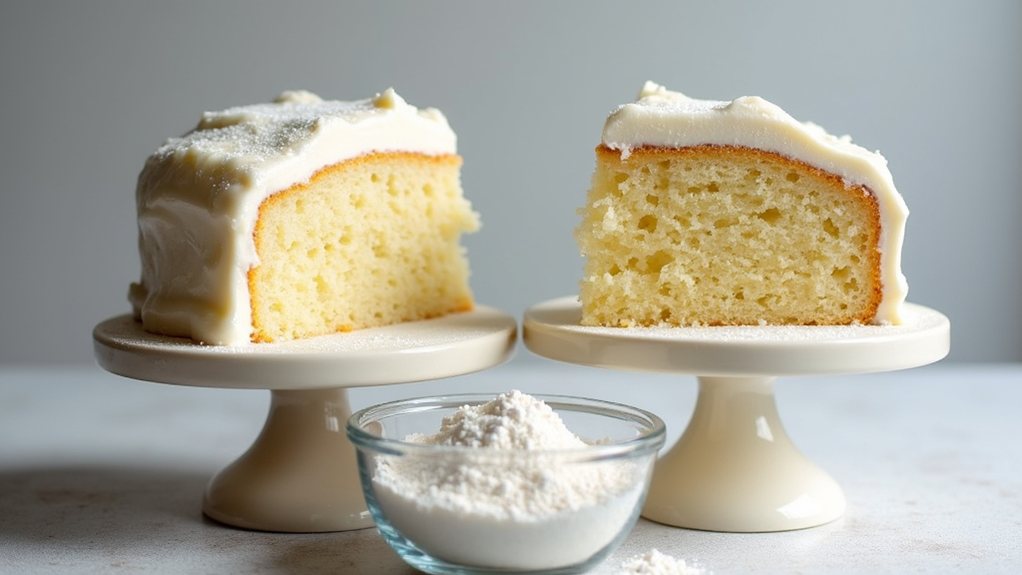
The choice between bleached and unbleached flour stands as a common dilemma for bakers seeking to create the perfect cake. These two varieties, though similar in appearance to the untrained eye, possess distinct characteristics that can influence the outcome of delicate baked goods.
Bleached flour undergoes chemical treatment with agents like benzoyl peroxide or chlorine to expedite the aging process, while unbleached flour matures naturally over several weeks or months, developing its qualities without chemical intervention.
The natural maturation of unbleached flour offers a chemical-free alternative to the expedited aging process of its bleached counterpart.
The differences extend beyond processing methods to texture and performance. Bleached flour typically boasts a finer, softer texture that many bakers find ideal for cakes and tender pastries. This refinement isn't merely aesthetic—the chemical bleaching process affects gluten development, often resulting in a more tender crumb structure.
Cakes made with bleached flour, particularly those treated with chlorine, tend to rise higher and maintain greater volume, creating that light, airy texture many cake enthusiasts desire. The lower pH of bleached flour contributes to this enhanced rising capability and produces a sweeter flavor profile in the finished product.
Nutritionally speaking, the variance between these two flour types is minimal when comparing refined versions. Both contain similar caloric content and macronutrients, though bleaching may slightly reduce vitamin E levels. Potassium bromate, once commonly used in bleaching processes, has been linked to cancer in animal studies and is banned in many countries outside the U.S.
Both varieties are typically enriched with B vitamins to improve their nutritional profile, making the choice less about health benefits and more about baking performance.
For the home baker concerned about flavor nuances, it's worth noting that bleached flour occasionally imparts a subtle bitterness that unbleached flour doesn't possess. However, this distinction is usually masked by sugar, butter, and other flavorful cake ingredients.
Unbleached flour, with its slightly denser texture and off-white hue, performs admirably in heartier bakes like bread but can still produce wonderful cakes with minor adjustments.
The flour debate ultimately boils down to preferences regarding processing, texture expectations, and baking purpose. While professional bakers might insist on bleached flour for certain delicate cakes, most home recipes will succeed with either variety, allowing personal values around natural versus chemical processing to guide your flour selection.
